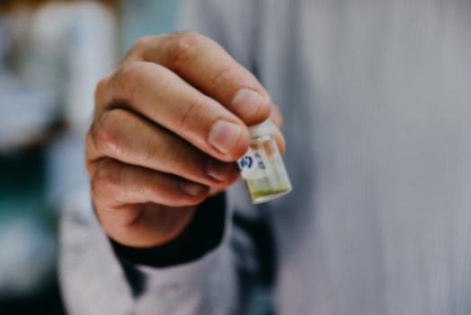Krasnoyarsk physicists: metal-organic framework can be simultaneously “open and closed”
9 September 2020 г.

Metal-organic frameworks are porous crystalline materials which include organic and inorganic components, for example, metal ions bound together by organic molecules. They represent a lattice structure where metals and organics form a "mesh". Several tens of thousands of such complexes are known, but only dozens of them have an amazing property - they change the structure of their pores in response to external stimuli.
Under the influence of temperature, gases, liquids, electromagnetic radiation or other mechanical action, such materials change the size of their pores. At the same time, other molecules, for example, gas or medicinal compounds, can penetrate into them. By controlling the state of the material, we can first introduce “guest molecules” into the framework, and then, extract them from it. This feature of highly porous frameworks allows them to be used for the absorption and storage of various chemicals, for example, for fine purification of gases with the release of rare compounds. However, for the widespread use of flexible metal-organic materials, it is important to figure out how to switch pores from the open to closed phase and back.
Scientists from the Federal Research Center "Krasnoyarsk Science Center of SB RAS" together with colleagues from Germany and the Siberian Federal University discovered a framework polymer which can be in two phases at once: open and closed. Previously, it was believed that the crystal closes almost instantly and can exist only in one of these two phases. However, scientists have demonstrated that both phases in some crystals can exist simultaneously.
The discovery was made during the study of a nickel-based metal-organic framework. The structure of a crystal, allowing one to form a framework, can be presented as a pillar consisting of pores of microscopic dimensions (a few nanometers only) in the open state. The faces of these pores are formed by organic molecules - linkers, which are connected to metal atoms at the vertices of the framework.
To understand the change mechanism in the crystal pores, scientists “subjected” them to the action of various liquid media. One of these liquids was methanol. The size of the alcohol molecules is smaller than that of the pores of the material under study; therefore, during the interaction, they penetrate into the framework. As a result, methanol exerts very little pressure on the metal-organic framework. For comparison, the researchers took a medium with larger molecules - silicone oil. Since these molecules are larger than the pores, they put pressure on the framework from the outside and transform it from the open to closed state. In the course of the study, physicists discovered that not all pores are closed at the same time in such a structure, thus creating an intermediate state in the crystal, with a part of the pores remaining open.
“Earlier research was carried out in gaseous media and under pressure of tens of atmospheres. Our study was performed in a liquid medium and at a much higher pressure - thousands of atmospheres. The intermediate state was assumed to be created by several crystals rather by a single one. It was believed that there were two different crystals in different phases – the closed and open phase. We examined a single crystal and showed that not only doesn’t it switch from one phase to another in just a couple of milliseconds, as was previously thought, but can be in an intermediate state from several hours to several days, " says Alexander Krylov, Candidate of Physical and Mathematical Sciences, senior researcher at the L.V. Kirensky Institute of Physics KSC SB RAS.
The researchers note that in the future they are going to test structures with other configurations, and also to determine why most of the discovered metal-organic frameworks do not have a flexible structure. “German colleagues say that there is still no clear understanding of why some metal-organic crystals have a flexible structure, while others do not. Of particularly interest is the question why the structure stops "moving" if it is only metal which changes. For example, some frameworks with cobalt and nickel in the composition are flexible, but when one of the metals is substituted with copper, they stop opening and closing. We would like to figure out what this ability is due to, ”says Alexander Krylov.
The obtained metal-organic single crystals can be used to create new miniature biochips for biosensors, which will allow, for example, to determine the presence of a chemical substance or viruses in the medium.
Share:
